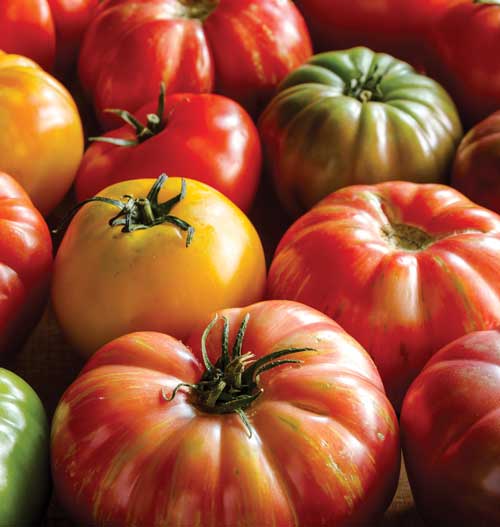Tastier tomatoes; Ultrasound to age liquor; Drone challenge for precision agriculture
CUTTING EDGE TECHNOLOGY
 In search of a better tasting tomato
In search of a better tasting tomato
To meet the handling demands of the modern food chain, fresh tomatoes have favored sturdier varieties with longer shelf life. However, these traits have sacrificed flavor. To understand and hopefully correct this taste deficiency, researchers from China, Spain, Israel, and the U.S. quantified flavor-associated chemicals in 398 modern, heirloom, and wild accessions and published their study—“A chemical genetic roadmap to improved tomato flavor”—in Science.
A subset of these accessions was evaluated in consumer panels, identifying the chemicals that made the most important contributions to flavor and consumer liking. They found that modern commercial varieties contain significantly lower amounts of many of these important flavor chemicals than older varieties. Whole-genome sequencing and a genome-wide association study permitted identification of genetic loci that affect most of the target flavor chemicals, including sugars, acids, and volatiles. Together, these results provide an understanding of the flavor deficiencies in modern commercial varieties and the information necessary for the recovery of good flavor through molecular breeding.
Ultrasound may assist aging of liquor
Ultrasound has been applied to a wide range of food processing operations, including cutting, preservation, filtration, meat tenderizing, and extraction. But Spanish researchers may have accelerated the development of a new application—the aging of liquor. Their research—“Study of a laboratory-scaled new method for the accelerated continuous ageing of wine spirits by applying ultrasound energy”—was published in the May 2017 issue of Ultrasonics Sonochemistry.
During the aging of brandies, many physicochemical processes take place involving the distilled spirit and the wood of the casks. Because of these reactions, the polyphenolic content of brandies and their content of organic acids increase with aging. These reactions are slow, and the aging of high-quality brandies can take several years.
The researchers created a controlled system that circulated the wine distillate at various rates through encapsulated American oak chips with the application of varying cycles of ultrasound energy. Applying Youden and Steiner’s experimental design, the researchers performed eight experiments related to aging. The results showed that the best spirit produced by this new method of aging is obtained with a high alcoholic strength of the distilled wine and a high quantity of oak chips, and at room temperature and high flow rates. In addition, the presence of oxygen in the sample and the absence of light increased the quality of the produced spirit. Finally, the application of ultrasound energy in large pulses is related to the improvement of two important aging markers: the intensity of the color and the total polyphenol index (TPI). The use of ultrasound over three days produced spirits that were similar in taste to traditional two-year-old brandies.
Food co-op creates drone challenge for precision ag
Land O’Lakes Inc. has recently established the Land O’Lakes Prize: Drone Challenge, a crowdsourcing competition designed to develop solutions that enable scalable, autonomous drone usage in precision agriculture. A prize of $140,000 will be awarded to a grand prize winner who is found to meet all the requirements of the challenge, and two $5,000 prizes are available to two runners up. Winners will retain intellectual property rights to the solutions they develop to help farmers use drone technology more effectively.
“We’re offering the Land O’Lakes Prize to accelerate the development of drones for the ag industry. We believe with a few more years of work and the direction we’re providing, backed by insights from our network of 300,000 farmers, we can create a marketplace for drones that ultimately creates better solutions for the farming community,” said Mike Macrie, chief information officer for Land O’Lakes.
“Drones don’t offer a good return on investment for farmers today,” said Mike Vande Logt, EVP and COO for WinField United. “A farmer has to get to the field, launch the drone, take the pictures, pack up, download the data, stitch the images together, then figure out what the images are telling him … it’s time consuming and the applications are difficult to use.”
The competition is open through Aug. 1, 2017. The new drone hardware and software solutions being sought will solve critical issues for farmers. They will limit the need for human involvement in field data collection, decrease the time needed to access crop imagery, and improve the ability for a farmer to make decisions based on field health data. More details on the competition are available at https://herox.com/LOLdrones.
If you are working on or know of some cutting edge technology that you would like to be featured in this column, please send an email to [email protected].
